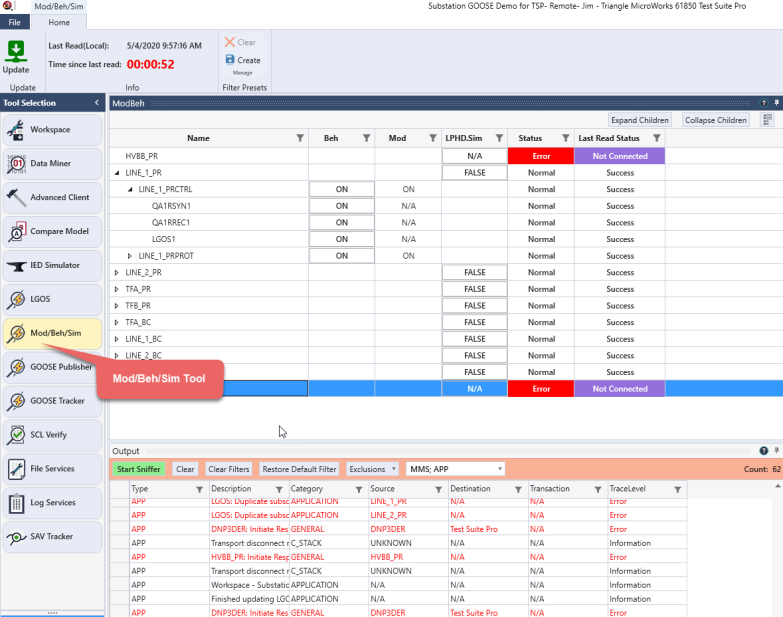Introduction
IEC 61850 provides several features to facilitate system testing. There are two separate mechanisms that often interact to facilitate testing in place and in particular “live testing”; Simulated process bus messages and Beh (behavior) of the Logical Node.
According to IEC 61850-7-1, An IED can be configured to respond to “Simulated” GOOSE or SAV messages on the network. When the device is configured with LPHD.Sim.stVal set to true, it will process any simulated streams it receives rather than the respective streams from the publisher(s) it is configured to subscribe to. These simulated messages are published by a test tool for this purpose. For any streams that are not simulated, the subscriber continues to receive the normal streams.
According to IEC 61850-7-4, the LN behavior can be configured to respond in a Test mode and operate in a Blocked mode:
- Test mode means that all data produced by the LN will have a quality flag that indicates it is test data and will then respond to control services and input data that have test flags indicated.
- Blocked means that while the LN will indicate via communications that it is functioning according to the standard, no physical outputs will be affected.
Behavior is calculated by the various Mod (mode) Data Objects in the device hierarchy containing the LN of interest. Mod of LLNO affects the Beh of all LNs in that LD, and GrRef points to another LD which this LD inherits from. The Mod/Beh/Sim tool is used to view and manage:
-
Mod/Beh of a Logical Device / Logical Node
-
LPHD.Sim of an IED
The image below shows a list of all IEDs in the workspace. All Logical Devices and Logical Nodes in each IED are enumerated in a tree structure.

NEXT: Manage LPHD.Sim

